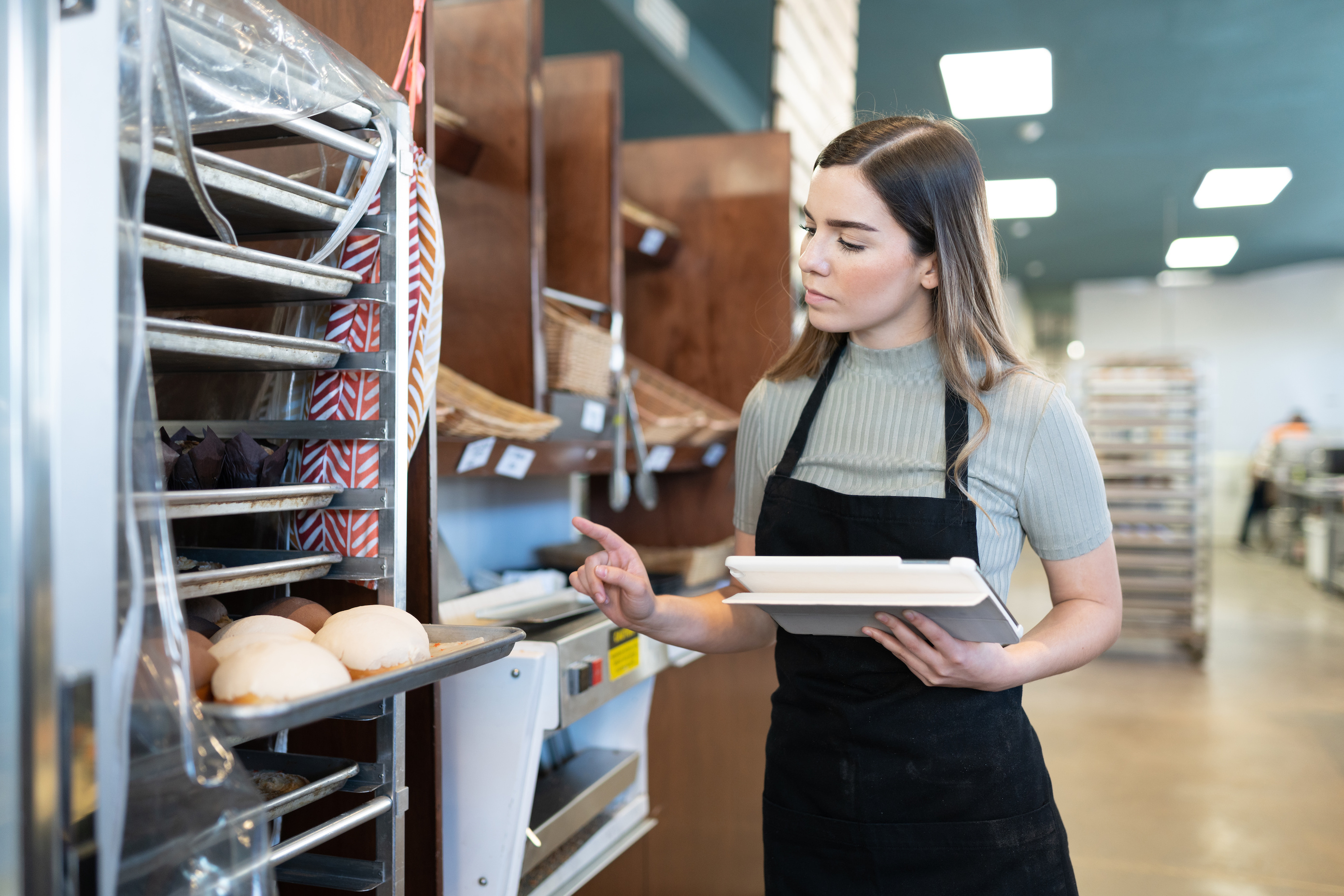Call Sales: +1 (833) 437-3835
Call Sales: +1 (833) 437-3835
Sarah Vancini | June 21, 2022 |

As a restaurant leader, you may be familiar with industry standards for pour and food costs, but what about ideal profit margins? With risks of rising wages and ingredient costs, creating optimal profitability is more important than ever for restaurants.
Improving food and beverage inventory management has always had a strong impact on profit margins. This is because proper inventory management:
Keeps service running smoothly
Improves inventory purchasing (not purchasing too much or too little)
Minimizes inventory lost to theft, spoilage, waste, spills, employee mistakes, staff meals and comping disgruntled customers
Increases cash flow
Increases productivity
Offsets overhead costs
Optimizes menu pricing
Improves portion control
Improves business decisions
Aides with COGS calculations
Controls labor costs
Improper inventory management for restaurants can lead to:
Unnecessary food waste (10%+ of food inventory restaurants purchase is wasted)
Inaccurate forecasting
Negative cash flow
Foods unused after expiration date
Difficulty meeting customer demand (food shortages)
How to Tell If You Need To Improve Your Food Inventory Management
Ask yourself and your staff:
What inventory have you purchased? What amount?
What is the quantity of inventory used each day?
What is the amount of leftover inventory at the end of each day?
What is the amount of wasted inventory at the end of each day?
If you can’t answer all of these questions and/or if you are unsatisfied with your answers, the tips in this guide can help your restaurant.
Using inventory data, calculate periodic automatic replacement (PAR) level, or the ideal amount of inventory you should have on hand at any given time. This will help you set accurate inventory goals.
PAR level = (the amount of inventory used each week + safety stock) / number of deliveries each week
Conduct an audit to see where food waste is coming from.
Do this when your restaurant is busy, but not at maximum output.
Measure your wasted inventory according to the following categories:
Over-Ordering
Spoilage
Overproduction
Assorted Misfires (ex. Forgetting an allergy note, misreading a ticket)
Poor Portion Control
Make note of which categories most of your waste is coming from. Here are some practical interventions for categories you may be struggling with:
Over-Ordering: Track inventory regularly (see “Create an Inventory Schedule” below) to ensure you are not ordering food you don’t need.
Spoilage: Clearly label all incoming products with best-by dates (see “Organize Your Food Storage”). This helps you implement the first-in, first-out (FIFO) storage method and reduces the amount of spoiled food you keep on hand.
Overproduction: Monitor sales data (see “Monitor Sales and Inventory Levels Every Day”and leverage this information to customize menus and batching levels.
Assorted Misfires: Proper training and active management can prevent mishaps.
Poor Portion Control: Try standardizing measurements for each dish to prevent unfinished meals.
Here are a few tips on how to use data to measure inventory key performance indicators (KPIs):
Based on your PAR and food waste audit, set restaurant KPIs.
Educate your employees in inventory best practices and keep track of employees' impact on inventory management goals.
Reward employees or shifts that meet or surpass these goals.
Monitoring sales and inventory daily help you remain agile and respond to demand in real-time.
For example, if you sold more than of a dish than you forecasted and notice promptly that its ingredient inventory levels are low, you can order new supply immediately to prevent having to remove it from your menu.
An organized stockroom prevents double miscounting and over/under ordering.
Be sure to:
Group items by food category
Label shelves
Label foods with expiration dates
Each day check for expired or unusable foods or ingredients now taken off the menu. Get rid of these goods.
In order to maintain consistency, select a few team members to be in charge of inventory tracking. These staff should be responsible for receiving and updating inventory.
Create an inventory counting schedule. Assure that your team counts inventory:
At the same time, on the same days and not when deliveries are made
After your doors close or before you open
This allows your forecasts and comparisons to be more accurate. You can more easily identify trends and make smarter business decisions.
Consumption sheets will vary depending on your restaurant’s dishes. In general, consider including the following information:
Ingredient name
Unit of measure
Amount used
Cost per ingredient unit
Total cost
Beginning inventory
Ending inventory
Daily consumption rate
Waste quantity
Waste cost
Leveraging technology to automate inventory management helps you and your staff spend more time on customer service and other value-add activities, rather than counting and ordering. Automation also helps remove human errors and creates cloud-based invoice data.
When working with restaurant POS vendors, ask about the following capabilities:
Timed inventory count push notifications for select team members
24/7 inventory management on any device wherever wifi is available
Automatically created product catalogs
Order suggestions based on ideal inventory levels and current stock
Although manually calculating the suggested data points as well as improving processes is a daunting task, when aided by the right software, like Revel's cloud-native point of sale (POS), these tasks can be automated.
Revel and other interoperable POS systems provide a unified interface with frequent data updates. Learn more about Revel or schedule a demo today.